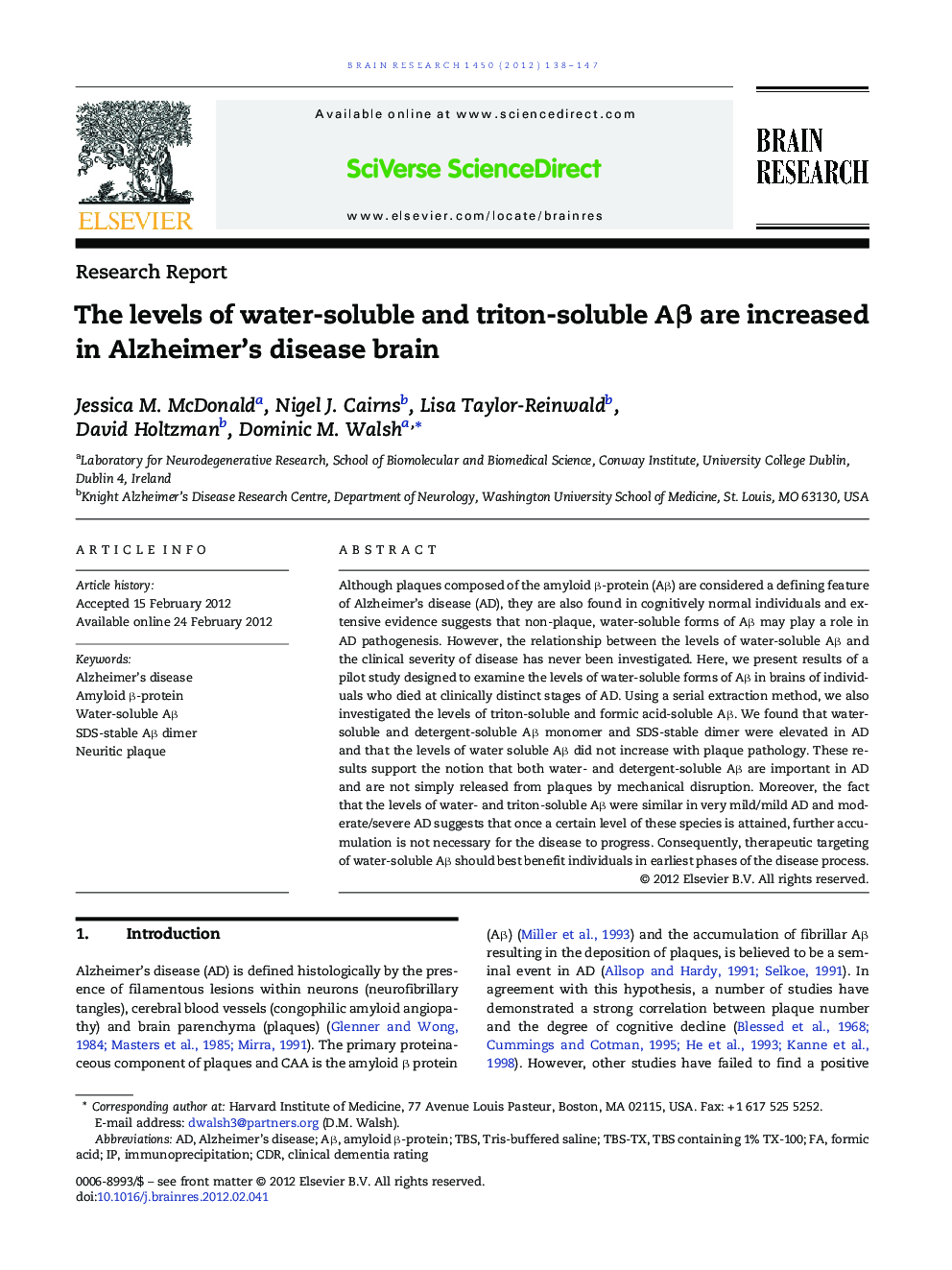| Article ID | Journal | Published Year | Pages | File Type |
|---|---|---|---|---|
| 6264423 | Brain Research | 2012 | 10 Pages |
Although plaques composed of the amyloid β-protein (Aβ) are considered a defining feature of Alzheimer's disease (AD), they are also found in cognitively normal individuals and extensive evidence suggests that non-plaque, water-soluble forms of Aβ may play a role in AD pathogenesis. However, the relationship between the levels of water-soluble Aβ and the clinical severity of disease has never been investigated. Here, we present results of a pilot study designed to examine the levels of water-soluble forms of Aβ in brains of individuals who died at clinically distinct stages of AD. Using a serial extraction method, we also investigated the levels of triton-soluble and formic acid-soluble Aβ. We found that water-soluble and detergent-soluble Aβ monomer and SDS-stable dimer were elevated in AD and that the levels of water soluble Aβ did not increase with plaque pathology. These results support the notion that both water- and detergent-soluble Aβ are important in AD and are not simply released from plaques by mechanical disruption. Moreover, the fact that the levels of water- and triton-soluble Aβ were similar in very mild/mild AD and moderate/severe AD suggests that once a certain level of these species is attained, further accumulation is not necessary for the disease to progress. Consequently, therapeutic targeting of water-soluble Aβ should best benefit individuals in earliest phases of the disease process.
⺠Water- and triton-soluble Ab are elevated in AD compared to controls. ⺠Elevation of water- and triton-soluble Ab can be independent from and precede plaque formation. ⺠Water- and triton-soluble Ab do not increase with AD severity, thus implying a ceiling effect.
